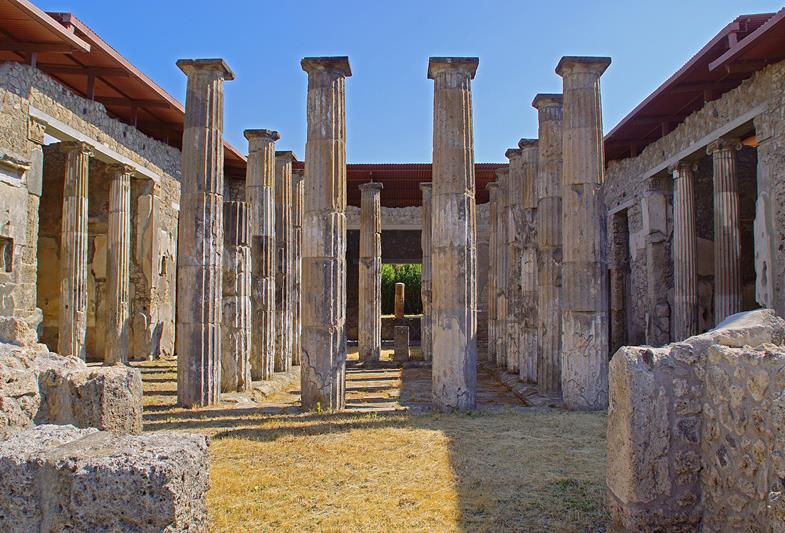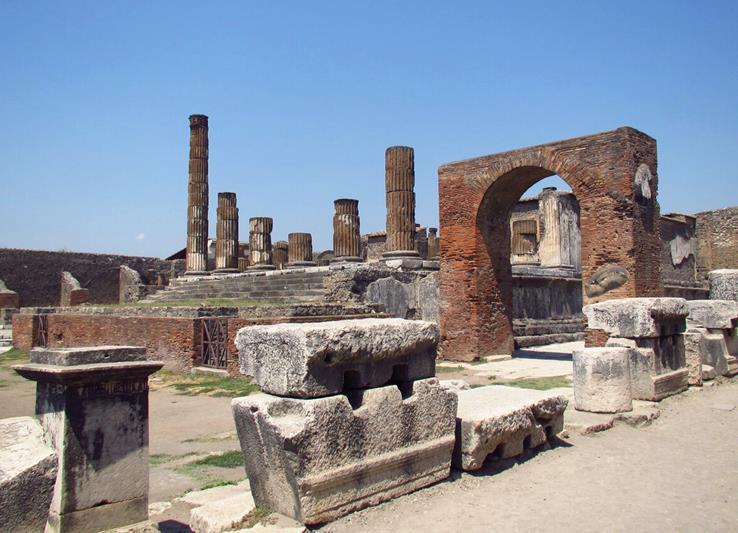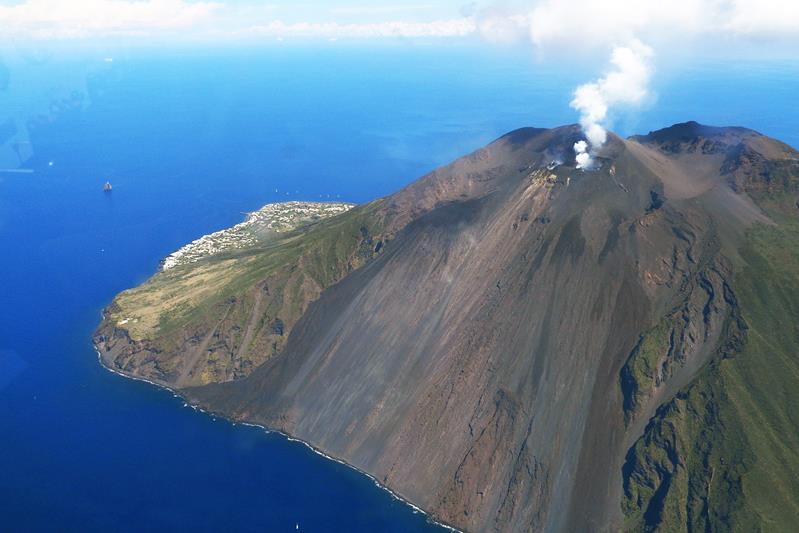There is perhaps no other volcano that has been so cruelly and majestically woven into human history as Mount Vesuvius today. Its imposing form rises above the shores of the Gulf of Naples, reminiscent of its strength and unbridledness. However, in addition to its external splendor, Vesuvius left its mark on history as a symbol of a terrible catastrophe – the destruction of the ancient city of Pompeii.
Discovering Facts About Vesuvius
Mount Vesuvius, located on the coast of Italy, is one of the most famous and easily recognizable volcanoes in the world. This majestic earthly guardian has a rich history filled with dramatic events and natural wonders. So what makes Vesuvius unique?
It is the only active volcano on mainland Europe, located approximately 15 kilometers from Naples. Its height reaches 1281 meters. It is one of three active volcanoes in Italy. Vesuvius is considered one of the most dangerous volcanoes, as its eruption destroyed two large ancient cities.
Despite the harsh conditions, many unique plants grow on the slopes of Vesuvius. Here you can see Mediterranean vegetation, including oaks, beeches and chestnut trees, as well as rare orchids and other wildflowers. Vesuvius is a popular tourist attraction. Many come here to do Mount Vesuvius and Pompeii tours and admire the view of the Bay of Naples and the surrounding landscapes. You can also visit the remains of the ancient cities of Pompeii and Herculaneum, destroyed by the eruption.
In addition, the volcano is the object of active scientific research. Scientists study it to better understand volcanic processes and predict possible future eruptions, to protect the lives and property of people living nearby.
The tragic end of Pompeii
The eruption of Vesuvius in 79 AD brought worldwide fame, leaving behind a tragic trail of destruction in several ancient Roman cities. However, the city of Pompeii became the most famous. The history of this eruption became available thanks to the written testimony of an eyewitness – Pliny the Younger, whose detailed account of the events gives us a dramatic picture of what was happening. In addition, a wealth of information about the course of events was provided by a detailed study of the traces of the eruption.
15 years before the terrible disaster, a significant earthquake occurred, but it was in no way connected with the possible awakening of the volcano. Residents gradually got used to slight fluctuations in the earth’s surface. The tremors became more frequent in the days before the eruption, but they also received little attention.

On the morning of the eruption, a cloud began to rise above Vesuvius, taking on the shape of a tree. According to experts, on that fateful day, Vesuvius threw a column of ash 32 kilometers upward. Ash began to rain on Pompeii, adding a new 15 centimeters to the layer every hour. At this time, many residents managed to leave the city, but some decided to stay and take refuge. Soon the roofs began to collapse under the weight of volcanic emissions. By evening, the thickness of precipitation in Pompeii had already reached three meters.
A few hours after the start, the most destructive phase occurred. The temperature of the lava reached more than +300°C, while indoors it rose to a minimum of +100°C. The active eruption ended in the evening of the second day. According to modern estimates, most residents managed to leave the danger zone. Approximately 2,000 people were found on the streets of Pompeii, although the city’s population was 20,000. In the 19th century, excavations began, which led to the discovery of a perfectly preserved city buried under a layer of ash.
The tragic end of Pompeii
The eruption of Vesuvius in 79 AD had a significant impact on the ecology of the Campania region and the entire Mediterranean. Destructive flows of ash, gas and lava caused the death of vegetation and animals in the area. Heavy ash fallout covered large areas, killing plants and polluting water sources.
In addition, large amounts of gases and ash released into the atmosphere could temporarily change the climate in the region and even the world, leading to short-term changes in temperature, precipitation and other climate parameters.
The environmental catastrophe became unavoidable as indigenous plants and animals dwindled, forests and fields were ravaged, profoundly impacting the area’s biodiversity. Furthermore, the volcanic eruption obliterated numerous Roman settlements like Pompeii and Herculaneum, drastically limiting available land for farming and living. The looming uncertainty persists today: will mount vesuvius erupt again? Presently, scientists remain unable to forecast such an event.
All these changes had a long-term impact on the ecology of the region and neighboring areas, although over time nature began to recover from the disaster. Today it is an amazing and complex volcanic wonder with a rich history and a unique ecosystem.




